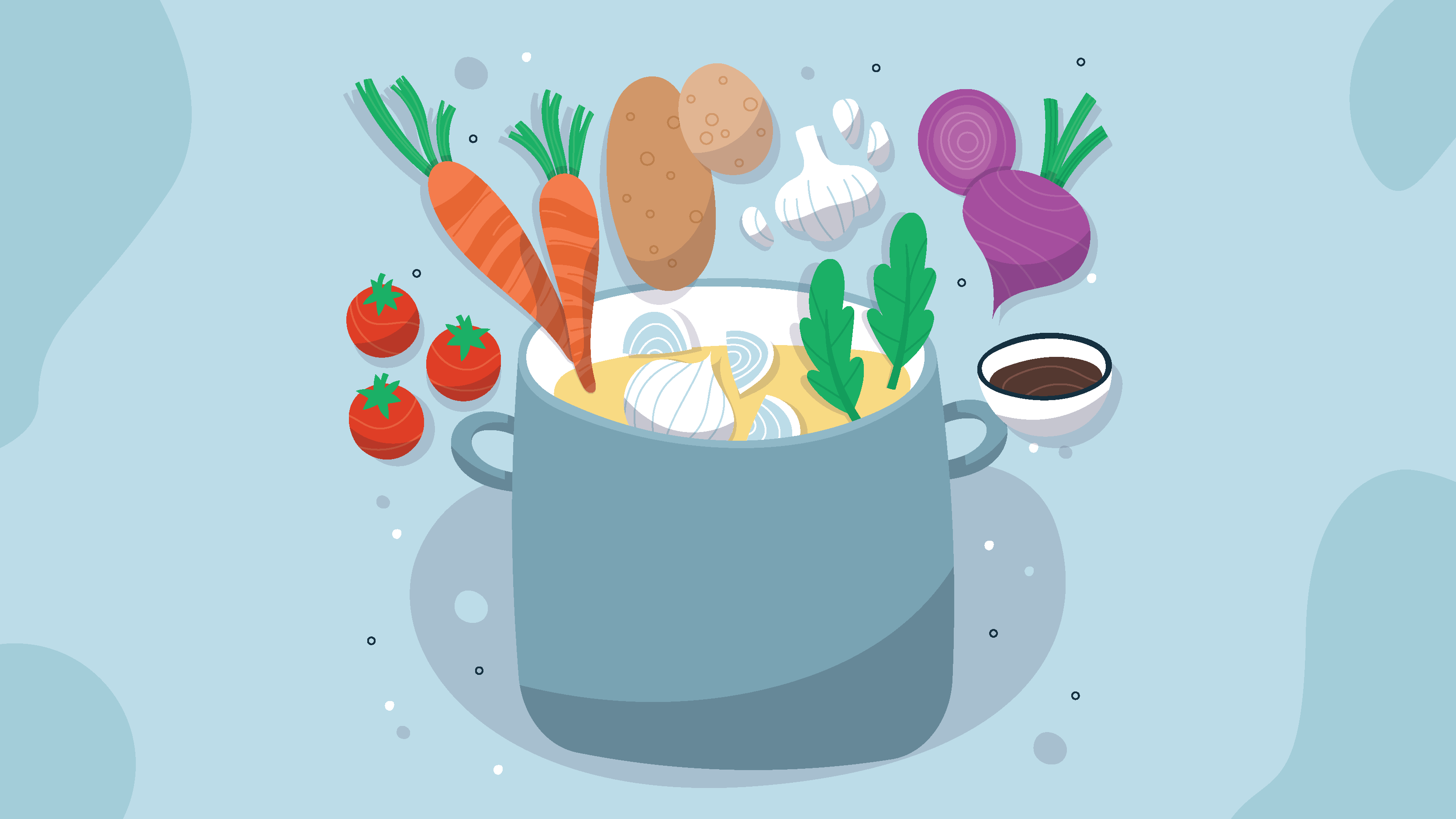
Cooking is a complicated fusion of science, art, and nutrition—it’s not just about turning raw components into a dish that tastes good. The decisions we make in the kitchen, such as which utensils to use and how to cook, can have a big impact on how nutritious our meals are.
Read More – What Are The Effects Of Too Much Sugar On The Body?
Let’s explore the intricacies of cooking techniques in this gastronomic adventure, paying particular attention to how they impact the delicate balance of nutrients in our food.
The seemingly harmless technique of boiling frequently gains attention as a healthier substitute for frying because it uses less oil. But beneath the surface bubbling over is a possible downside: loss of nutrients. Vegetables lose a significant amount of their vital vitamins and minerals when they are immersed in boiling water.
Here, it’s important to use this nutrient-rich broth again for soups and other recipes rather than throwing it out.
The heating process can have an impact on the dynamic equilibrium that determines our food’s nutritional content. Consider the pigment beta-carotene, which gives many orange and red fruits and vegetables their vivid colors. This molecule is enhanced during heating and is a precursor to vitamin A. Conversely, exposure to heat can degrade vitamin C, a water-soluble vitamin recognized for its antioxidant qualities.
The key is to cook thoroughly but quickly in order to preserve the maximum amount of nutrients. Overcooking can result in a substantial loss of nutrients, particularly when cooking vegetables. This brings us to three widely used cooking techniques.
Utilizing high pressure and temperature to accelerate the cooking process, pressure cooking is a culinary miracle. Less nutritional loss and quicker cooking times are the outcomes. The secret to success is to pay close attention to the food as it quickly changes and to the precise instructions that come with the pressure cooker.
There is a warning when it comes to plastic containers when using the microwave, which is frequently the pinnacle of kitchen ease. Even though these containers and plastic wrap are labeled as microwave-safe, they can contain chemicals that could be harmful to your health. To reduce the chance of chemical leaching, the solution is to use glass or ceramic containers and cover the food with a damp paper towel.
Let’s now delve into the realm of steaming, a cooking technique that ensures effective heat dispersion while reducing contact with water. A big pot fitted with a steamer basket is a dependable way to cook veggies until they have bright colors and a hint of crunch. Because of their inherent qualities, bamboo steamers are also fantastic options. Here, the idea is to simmer the vegetables just long enough to bring out their flavor and texture without sacrificing any of their vital elements.
In order to fully understand the subtleties of optimizing nutrient intake, we need to look beyond cooking techniques. Everything from pots to utensils that we use in the kitchen can have a significant impact on how nutritious our meals turn out to be overall.
It’s a comprehensive strategy that takes into account every component that comes into contact with our food, not simply the stove.
Although heating intensifies flavors and textures, it also causes food to lose some of its nutrients. It’s essential to know how different cooking techniques affect different nutrients in order to make wise decisions in the kitchen. Let’s examine the causes of nutrient loss during cooking in more detail as well as how certain vitamins and minerals are affected.
1. Vitamin C: Rich in fruits and vegetables, vitamin C is susceptible to deterioration when cooked. Studies on the effects of steaming, boiling, and frying on vitamin C concentration come from the University of Parma. Boiling causes a 48% loss, and steaming for five minutes yields a 32% loss and losing 87% of the fry time. Surprisingly, research suggests that pressure cooking, as opposed to boiling, is kinder to vitamin C.
Parental advice: To reduce nutritional loss when cooking foods high in vitamin C, such as peas, choose steaming or pressure cooking.
2. Folate: Cooking techniques have a big impact on folate, a vital B-vitamin required for cell formation and particularly vital for pregnant women. Ten minutes of boiling causes a 58% loss of folate in spinach. In contrast, 5 minutes of steaming maintains 50% of the folate level, whereas frying results in a 50% loss.
Parental takeaway: To preserve the folate content of spinach, steaming is the recommended cooking method.
3. Potassium: Potatoes are a great source of potassium, which is good for the heart. 50% of the potassium in potatoes can be lost when they are boiled in water, particularly if the potato is chopped before boiling. Furthermore, losing the water adds to the loss of nutrients.
Parental lesson: To get the most potassium out of your potatoes, steam them with the skin on.
4. Proteins: During cooking, the quality of proteins in meat, eggs, beans, and legumes is mostly unaffected by the denaturation of certain amino acids. It’s crucial to remember, though, that cooking has little effect on a food’s protein level.
Parental advice: Don’t worry too much about major nutrient loss when cooking proteins; instead, concentrate on using the right methods.
5. Vitamins A, D, E, and K: Oil-based cooking techniques can affect fat-soluble vitamins like A, D, E, and K. B-vitamins can be lost by up to 60% when simmering meat or fish for longer than 30 minutes. Meat that has been boiling for 5 minutes loses 45% of its vitamin B-6 content. Microwaving preserves more beta-carotene, a nutrient found in carrots and a precursor to vitamin A, than pressure cooking.
Parental takeaway: When preparing fat-soluble vitamins, pay attention to the timing and technique of cooking, and think about adding the cooking liquid to stews or soups.
It’s important to remember that deep-frying can protect the carotenoids in vitamin A even though it may cause some vitamins to seep into the oil. Carrots, for instance, have a high concentration of antioxidants when boiled, therefore the water used to boil them is a useful addition to soups or stews.
Cooking foods for shorter periods of time at lower temperatures and with less liquid is a sensible way to preserve their nutritional content. This careful method guarantees that the precise balance of minerals and vitamins is preserved, so you can enjoy the taste and health advantages of your food. Armed with this knowledge, you may make thoughtful decisions in the kitchen to maximize the nutritional content of the food you cook for yourself and your family.
In summary, the process of going from farm to plate is a complex one in which each choice we make in the kitchen affects how nutrient-dense our food is. Cooking is a way to nourish our bodies with the goodness that nature has to offer, not merely to satisfy our palates. Every cooking method has its own advantages, whether we choose the simplicity of steaming, the effectiveness of pressure cooking, or the ease of microwaving.
Read More – Cooking Techniques For Healthier Meals
Cooking is a science that is always changing, and our knowledge of nutrition is also getting deeper. Making wise decisions in the kitchen is crucial as we find ourselves at the crossroads of innovation and tradition. By doing this, we maximize the nutritional value of the foods that support us in addition to enjoying the flavors. Thus, the next time you go on a gastronomic adventure, think about how your decisions may affect the delicate dance of vitamins and minerals in your meal. Accept the kitchen as a laboratory where the magic of cooking turns uncooked materials into a harmonious blend of flavor and nutrients.
Read More – RevHealth Strengthens C-Suite Naming Marcia Goddard As Chief Creative Officer



